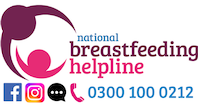This information can also be viewed as a PDF by clicking here.
The information provided is taken from various reference sources. It is provided as a guideline. No responsibility can be taken by the author or the Breastfeeding Network for the way in which the information is used. Clinical decisions remain the responsibility of medical and breastfeeding practitioners. The data presented here is intended to provide some immediate information but cannot replace input from professionals.
Migraines are different from normal headaches and can be totally debilitating. Pain is often accompanied by nausea and vomiting as well as sensitivity to light and sound. Some people also experience auras and changes in vision. They are said to affect up to 20% of women. Triggers vary for most people but migraines can be associated with missing meals and not drinking enough watery fluids. The pain is often described as throbbing. For further information www.migrainetrust.org
All of these drugs can be taken with normal breastfeeding without interruption
|
Treatment of migraine
A simple analgesic such as paracetamol (preferably in a soluble or dispersible form) and/or a non-steroidal anti-inflammatory drug such as ibuprofen, diclofenac or naproxen is often effective. Aspirin should be avoided because of the associated risk with Reye’s syndrome.
Peristalsis and therefore gut absorption is often reduced during migraine attacks so the medication may not be sufficiently well absorbed to be effective; dispersible or effervescent preparations are therefore preferred. It may be useful to take an anti-nauseant alongside the simple painkiller (outside of manufacturer recommendation).
Codeine should be taken with caution during breastfeeding and avoided if it causes drowsiness in the baby (more frequent or longer sleeping periods). Codeine is contained in many of the over the counter remedies. See https://www.breastfeedingnetwork.org.uk/codeine/ for more information. Codeine is no longer recommended as routine medication for breastfeeding mothers (MHRA June 2013, EHA and BNF ) with particular caution where the mother has never taken the drug before or has found that the drug causes her to be drowsy, dizzy or experience severe constipation. See https://www.breastfeedingnetwork.org.uk/analgesics/ for more information.
If treatment with an analgesic is inadequate, an attack may be treated with a specific anti-migraine compound such as a 5HT1-receptor agonist (‘triptan’). The manufacturers recommend that breastfeeding should be interrupted for 12 hours following use of these drugs. Hale however states “Sumatriptan is the best-studied drug in its class and is suitable for use in breastfeeding women. One trial (Wojnar-Horton 1996) measured drug concentrations in the plasma and milk of 5 women given a 6 mg subcutaneous injection. Milk levels were 4.9 times higher than plasma levels and peaked at 87.2 µg/L at 2.6 hours post-dose. The mean half-life of elimination from the milk was 2.2 hours. Total recovery of the drug via milk was calculated to be about 14.4 µg, or 0.24% of the 6 mg dose. This equates to a relative infant dose of 3.5%. Given that triptans are not given continuously and that the drug has such poor oral bioavailability (14%), the amount of sumatriptan that reaches the infants circulation is expected to be exceedingly low (less than 1%).”
There has been no research on the passage of any of the other triptans into breastmilk.
Topical cooling pads are also available for symptom relief.
Over the counter remedies available
Caution is advised on any product containing codeine (see note above and observe for drowsiness) or a decongestant such as phenylephrine which may decrease milk supply.
- Migraleve™ – pink tablets contains paracetamol, codeine and buclizine; yellow tablets contains paracetamol and codeine
- Syndol™ which contains paracetamol, codeine and caffeine
- Solpadeine headache ™ which contain paracetamol and caffeine
- Solpadeine migraine ™ which contain ibuprofen and codeine
- Nurofen migraine ™which contains ibuprofen
- Sudafed congestion & headache relief max strength™ which contains paracetamol, caffeine and phenylephrine
- Nurofen tension headache™ contains ibuprofen
- Boots Cooling Headache and Migraine Pads
- Kool ‘n’ Soothe Migraine Sheets
- 4head Quickstrip Standard analgesic brands vary in ingredients.
Sometimes breastfeeding mothers take/are prescribed one or two doses of codeine/co-codamol accidentally or when nothing else is available. In these circumstances the risk of adverse effects is low and breastfeeding can continue as normal. The baby should be observed for drowsiness. This data applies only if the baby is term or older and has no breathing difficulties. https://breastfeeding-and-medication.co.uk/fact-sheet/accidental-dose-of-codeine-when-breastfeeding
Medicine over use headaches
Excessive use of acute treatments for migraine (opioid and non-opioid analgesics, 5HT1 receptor agonists,) is associated with medication-overuse headache (analgesic-induced headache which may be daily); therefore, increasingly frequent consumption of these medicines even at recommended doses needs careful management. The treatment is to stop all medications even though for a week or so headaches and migraines may be more frequent and worse but they will the return to a less frequent condition. Ten days a month or more of triptan or opiate use is considered to be overuse, whereas fifteen days or more a month of paracetamol (alone) or NSAID use is considered as overuse. Frequent use of codeine can lead to addiction.
Bibliography
- British National Formulary
- Hale T. W Medications in Mothers Milk
- Jones W Breastfeeding and Medication 2018 Routledge
- Lactmed website http://toxnet.nlm.nih.gov/cgi-bin/sis/htmlgen?LACT
- Martindale, the Extra Pharmacopia 2007
- Medicine over use headaches http://patient.info/health/medication-induced-medication-overuseheadache
- EMA 2013 europa.eu/ema/index.jsp?curl=pages/news_and_events/news/2013/06/news_detail_001813.jsp&mid=WC0b01ac058004d5c1
- MHRA 2013. gov.uk/NewsCentre/Pressreleases/CON286871
- Painkiller headaches nhs.uk/Livewell/headaches/Pages/Painkillerheadaches.aspx
- Wojnar-Horton RE, Hackett LP, Yapp P, Dusci LJ, Paech M, Ilett KF. Distribution and excretion of sumatriptan in human milk. Br J Clin Pharmacol 1996; 41(3):217-221.
©Dr Wendy Jones MBE, MRPharmS and the Breastfeeding Network January 2022

